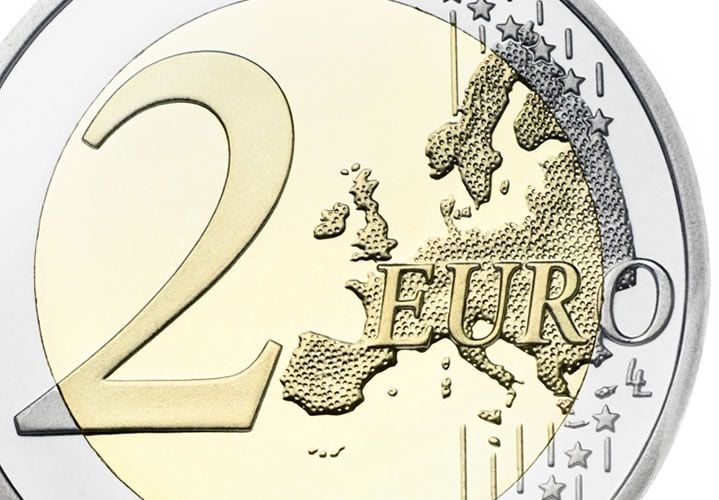Euro / Dollar Surges but Limit Could be at 1.1050
- Written by: Gary Howes

Tuesday, May 16 belongs to the Euro.
The shared currency is swatting aside all that lies before it ensuring it is the month-to date best performer in the G10 complex and is even outperforming the next ten largest currencies in the market place.
"The higher EUR seems to be a cause of an anticipation of a shift in the ECB monetary stance," says Petr Krpata at ING in London.
Markets appear to be betting heavily that with the French election behind us and a growing Eurozone economy the time for a sea-change in policy at the ECB beckons.
Analysts are expecting the central bank to hint at its June meeting that stimulus will slowly be withdrawn over coming months. An interest rate rise could even be on the cards for late-2017 / early-2018.
The US Dollar has meanwhile depreciated against all of its G10 counterparts as the case for the Federal Reserve to raise interest rates aggressively has faded further.
The Euro to Dollar exchange rate has risen to 1.1033, its highest level since November 2016.
Analysts are citing a number of reasons for the latest shift with softer global investor sentiment linked to fresh revelations of US President Donald Trump’s relationship with Russia being cited by some.
However, the big big shift in the market came on the back of last week’s worse-than-expected US inflation data which suggested to markets that the US economy might be cooling and the prospect of a higher Dollar faded.
Since then a host of currencies have been able to claw back ground against the Greenback.
“The activity in the US sovereign markets hinted at a lower incentive to push the US Dollar and the US yields higher,” says Ipek Ozkardeskaya, analyst with London Capital Group.
Ozkardeskaya is referring to the US market for government bonds - by far the largest investment asset in the United States. Demand for US debt from global investors therefore has an impact on the value of the US Dollar.
A key determinant in the pricing of these bonds is the US Federal Reserve - if they are looking to raise interest rates the yield on these bonds rises, and this in turns drives demand for the bonds amongst international investors which in turn bids the Dollar higher.
The probability of a June interest rate hike eased to 97.5% after hitting 100% a week earlier.
The US 10-year yields hold the ground at the 2.30% level, yet investors readjust their forecasts in favour of a more balanced view.
As an example, Pimco lowered its 2017 core US inflation forecast to 2.0% from 2.3%.
“The stagnation in the US yields drives the capital toward popular carry currencies, such as AUD and NZD and to non-interest bearing assets, such as gold,” says Ozkardeskaya.
The Euro is also benefiting with the Euro to Dollar exchange rate .
The 10year Treasury/Bund yield gap hasn't been below 190bp since 1 November last year, when US yields were rising on the excitement about Donald Trump's election win.
“The furore after news reports that the President shared highly-classified security information with the Russian foreign minister has prevented bond yields from rising in response to the equity market mood and allowed EUR/USD to nudge above 1.10 again,” says Kit Juckes, a strategist with Societe Generale in London.
Nominal yield spreads continue to point upwards which should support the Euro further.
“EUR/USD recovered to a high of up to 1.0990, clearing the hurdle at 1.0950. The technical setting is improving,” says Ralf Umlauf at Helaba Bank in Frankfurt.
The MACD is about to cross back over its signal line while the stochastic is turning up which suggests to the analyst that the outlook is turning more bullish from a technical perspective.
“Also worth highlighting on the positive side is the fact that the support around 1.0850 is intact and so the euro is trading above the 200-day moving average (1.0826). Above that, the 1.1023 level will need to be cleared in order to open up more room within the uptrend. Our favoured trading range: 1.0920 – 1.1050,” says Umlauf.
However, we note that the Euro has struggled to sustain moves above the 1.10 line.
“The last time EUR/USD traded above 1.10 was before the US election and the failure to sustain a break earlier this month has made the psychological resistance line all that more important,” says foreign exchange analyst John Cairns at RMB.
Also wary of the Euro’s potential above 1.10 is Juckes at Soc Gen who says there are two caveats to mention.
“Firstly, that the currency is still moving faster than the yield moves and needs higher Bund yields to provide some confirmation.
“Secondly, the move isn't as impressive if I look at real yields, as US 10-year breakevens are at 1.85% now, also their lowest since November.”
As a result, Juckes believes the EUR/USD advance is likely to continue to be a case of two steps up and one step down.




